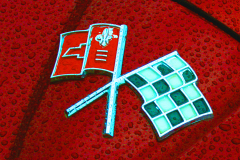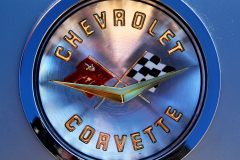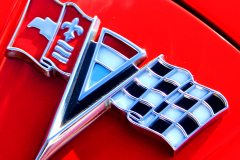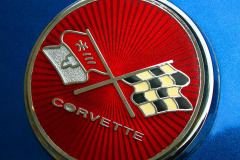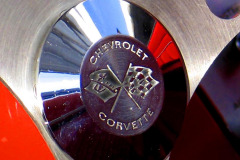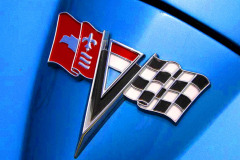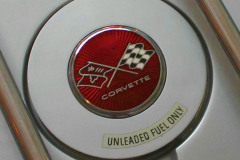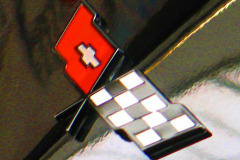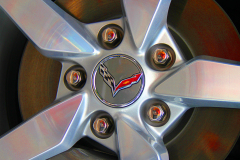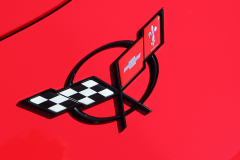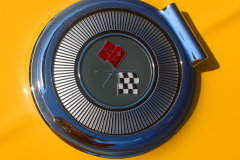Chevrolet
The Chevrolet Motor Company was co-founded in 1911 by Swiss race car driver and automotive engineer Louis Chevrolet and ousted General Motors founder William C. Durant.
Chevrolet then acquired a controlling stake in General Motors with a reverse merger in 1918.
The first Chevrolet, was the 1913 Chevrolet Series C Classic Six.
Chevrolet (commonly called a Chevy or Chev), first used the “bowtie emblem”logo in 1914 . Some claim that the design was a stylized Swiss cross, in tribute to the homeland of Louis Chevrolet.
GM’s maxim was “a car for every purse and purpose”, and in 1919 Chevrolet become the volume leader in the GM family, selling mainstream vehicles to compete with Henry Ford’s Model T. Marketing efforts touted efficiency combined with savings – “enormous buying power” 1914, “Quality at low cost”, 1923, and “A Six for the Price of a Four” 1929. Chevrolet overtook the Model T as the best-selling car in the US in 1929.
After the Chrysler Corporation formed Plymouth in 1928, Plymouth, Ford, and Chevrolet were known as the “Low-priced three”.
Chevrolet had a great influence on the American automobile market during the 1950s and 1960s. In 1953 it produced the Corvette, a two-seater sports car with a fiberglass body. In 1960 it introduced the Corvair, with a rear-mounted air-cooled engine. In 1963 one out of every ten cars sold in the United States was a Chevrolet.
During the 1960s and early 1970s, the standard Chevrolet, particularly the deluxe Impala series, became one of America’s best-selling lines of automobiles in history.
The Corvette, known colloquially as the Vette, has been produced through seven generations. The first model, a two-seater convertible sports car with a fiberglass body, was introduced in 1953. The car is named after the type of small, maneuverable warship called a corvette.
Tri-Five refers to the 1955-1957 Chevrolet automobiles, in particular, the Bel Air, 150, 210 and Nomad. All featured a front-engine, rear-wheel-drive layout.
The first Corvette coupé – the Sting Ray – was introduced in 1963. Dramatic changes in refinement and style made this car more competitive with European sports cars of the time. Convertible models quickly followed. The inspiration for this design was the streamlined shape of a Mako Shark.
During the 1960s and early 1970s, the standard Chevrolet, particularly the deluxe Impala series, became one of America’s bestselling lines of automobiles in history. In 1963 one out of every ten cars sold in the United States was a Chevrolet.
The Chevrolet Camaro has been produced through five generations (1967-2002) (2010-present). Originally designated as a pony car, some versions also were classified as muscle cars and sports cars.
Super Sport, or SS, is the signature performance option package offered by Chevrolet on a limited number of its vehicles. The package was first made available for the 1961 Impala. Other models bearing the SS badge include the Camaro, Chevelle, El Camino, Monte Carlo, and Nova.
The Chevrolet Chevette (1976-1987) front-engine, rear-drive subcompact was offered as a three-door or five-door hatchback. The Chevette superseded the Vega as Chevrolet’s entry-level subcompact, and sold 2.8 million units over 12 years.The Chevette was the best-selling small car in the U.S. for model years 1979 and 1980.
In late 2010 General Motors began production of the plug-in hybrid Chevrolet Volt, which received multiple awards including the 2012 North American Car of the Year, European Car of the Year, and World Green Car of the Year. The Volt family of vehicles ranks as the world’s all-time top selling plug-in hybrid.
In October 2016, GM began production of the Chevrolet Bolt EV, the first ever affordable mass market all-electric car with a range over 200 miles. The Chevrolet Bolt won several awards and was listed in Time Magazine “Best 25 Inventions of the Year”.
Chevrolet enters a variety of cars in sporting events around the world and is particularly well known in NASCAR, Indycar, and the FIA World Touring Car Championship.



